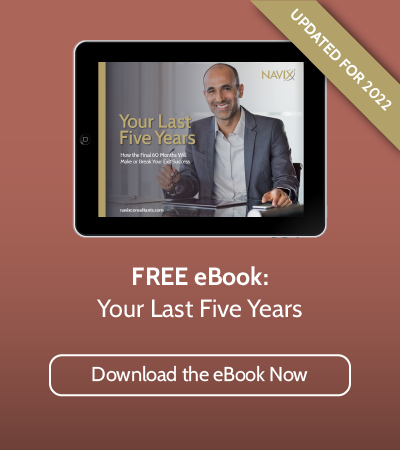By: Patrick Ungashick

It’s not difficult to evaluate your company’s profitability—it’s right there, in black and white, in the financial statements. This clarity is beneficial, because company profitability is arguably the single most critical area of business performance. As the saying goes, revenue is vanity but profits are reality. So when you one day want to exit, the more profitable your business, then likely the more valuable it will be at your exit.
But just because your company is profitable, does that mean it is exitable? Admittedly, I made up the word “exitable,” but for a good reason. An exitable company is one that is well prepared for the owner to exit and will fulfill the owner’s business and personal exit goals. Many companies are profitable but not exitable. If your company has any characteristics that limit its exitabilty, when you go to exit you will find the path more difficult than you expected, the company less valuable than you desired, or at worst your exit completely blocked. Moreover, if you only find out all these issues right when you want to exit, it will be too late to do anything about it.
Profitability and exitability are not the same. There are a surprising number of ways that businesses can grow and operate profitably, without necessarily being exitable. Here are four common situations where this can occur:
Owner Dependency
The first common limitation on exitability is owner dependency. If your business is dependent on you, or any other owners, to operate and grow profitably, this typically limits exitability. The company’s value cannot walk out the door when you do. It’s also ironic because your company probably would not be what it is today if you had not worked as hard as you have up to now, perhaps over many years. It’s great to be good at what you do, but if your company is losing an essential employee when you exit, that undermines exitability. It’s not enough either to say that the company could manage to survive without you. It has to be able to thrive without you. Buyers want to know that the business’s profits will not slow down nor go away when you do.
Customer Concentration
The second common limitation on exitability is customer concentration. This statement may surprise you because customer concentration is usually a byproduct of a job well done. Your company may have served one or a few customers well, and they've responded by sending more and more business your way. Then, one day, you look around, and 20%, 30%, 50%, or more of your revenue and profits comes from these few customers. These customers might be generating many profits, but customer concentration usually limits exitability. If you intend to sell your company one day, your future buyers likely won’t have longstanding relationships with these customers, creating risk for them. Buyers often pay less for companies with customer concentration or pass on purchasing that company altogether. Customer concentration thus becomes a serious limitation on exitability, no matter how profitable those customers may be.
Co-Owner Goal Misalignment
The third way many companies experience limited exitability is if they have co-owners who are not in alignment with one another. We did a research study a number of years ago and it revealed that 7 out of 10 small to medium-sized privately-owned companies have ownership shared among two or more co-owners. We often see co-owners who are in strong alignment with one another for years and sometimes even decades while they are working together to grow the business because they share one clear priority, which is to increase revenues and profits. The problem arises when one or more of those co-owners get closer to exit because the goals often change and the co-owners find themselves no longer in alignment. For example, one co-owner may want to sell now, while another wants to wait. Alternatively, one co-owner may wish to sell for a lower price, while another wants to keep growing the company and hold out for a higher price. Whatever the situation, when the goals change, the co-owner alignment changes, and often the co-owners don't even realize it's happening until close to exit, at which point it can completely undermine a company’s exitability. No matter how profitable your company may be, if the co-owners are not in alignment, exitability will suffer.
Unclear Plan for the Future
The fourth way companies experience reduced exitability, regardless of profitability, occurs if the company lacks a clear, compelling plan for future growth. For a company to be highly exitable, it must offer a buyer or successor a credible and compelling vision for how that company will grow going forward, after your exit. How profitable the company has been up to this point is nice, but what the company is expected to do in the future drives value and exitability.
Many profitable companies don’t have the systems and habits that help create this compelling plan for future growth. For example, the company leadership team might not do robust strategic planning, or perhaps they do not diligently measure monthly or quarterly performance against financial budgets and operational benchmarks. Without experience doing effective strategic planning, and without a clear track record of being accountable for achieving business goals, it may be unclear to the future buyer or successor whether or not this company can sustain its future growth after your exit. This lack of management practices undermines exitability, even if the profitability has historically been excellent.
Conclusion
These are just four situations that can limit a company’s exitability—and they are prevailing. Growing profits, and getting a company ready for exit, are two different needs. To learn more about preparing your company for exit, consider this educational webinar or contact us with your exit planning questions.








